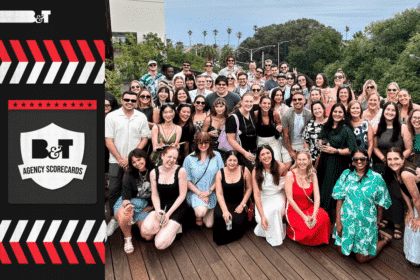It started with great fanfare but ended a mere 10 months later as a bit of a messy disaster. Henry Tajer’s short-lived reign as Dentsu Aegis Network’s CEO finished with a fizzle via a shock announcement from the holding group yesterday afternoon.
Tajer’s out – alongside the agency’s CFO, Reg Davidson – to be replaced immediately by chief commercial officer Angela Tangas.
When the 49-year-old was hoisted into the CEO role back in January – he’d been at his previous role at Amazon a mere five months – he appeared to be the best local candidate (of few possibilities) to replace the departing Simon Ryan.
With two decades of experience at WPP and IPG, Tajer – a self-confessed Sorrell fan – appeared the right man to lead DAN (by that we mean its media agencies) to its digital, martech and programmatic future, that would see off its (cheaper) rivals and keep those damn consultancies and tech giants at bay.
For too long, DAN’s media agencies – Carat, Vizeum and dentsuX (formerly Dentsu Mitchell) – had proven its cash cow, boasting an enviable list of big spending clients that included the likes of Woolworths, Virgin Airlines, L’Oreal and the AFL.
Interestingly, DAN boasts a flotilla of top performing creative agencies too – namely BWM Dentsu, Isobar and WiTH Collective (that merged with Isobar last week). As anyone who reads B&T’s monthly new business wins report, Isobar is regularly near, if not at, the top. But, as we know, as there are decreasing margins in media, there’s often f@ck-all in creative.
In an interview with The Australian in February, Tajer said he’d been given free rein as the agency’s incoming CEO and there was no interference from Dentsu’s bosses in Tokyo. Although, that may have been a misconception on Tajer’s part. When DAN promoted Ashish Bhasin to CEO of its APAC agencies in September, it was clear Tajer did indeed have a new and formidable taskmaster based out of its Singapore office.
Commenting on Tajer’s abrupt departure in a statement yesterday, Bhasin didn’t mince his words. “It was the right decision for the network and market,” he said. The fact that DAN also used Tajer’s departure to announce his replacement in Angela Tangas would infer that his exit had been orchestrated for some time now.
In Tajer’s defence, he inherited a problem child in DAN when he took the job in January. Not only was business walking out the door, but senior people too. Just prior to Tajer’s arrival, the agency had lost its CEO Simon Ryan.
The turnover didn’t stop once Tajer commenced, with Carat managing director Simon Williams, head of public affairs and communications Andrew Hewett, Amplifi boss Adrian Roeling and managing director of DAN’s data-marketing agency Columbus Mitchell McBeath all leaving during Tajer’s tenure.
But Tajer set about making DAN the smaller and more agile agency he promised when he took the role. That included culling its 1800 existing staff and namely folding its media innovation and investment arm Amplifi in May amid claims that clients hated it and, only last week, merging (the presumably underperforming) creative agency WiTH Collective into Isobar.
Not that Tajer didn’t understand the enormity of the job ahead of him. In an interview with Mi3 in June, Tajer said: “I’m not going to sugar coat we’ve had a number of account losses. You do not lose accounts because things are going well”. Tajer also described the business as “over engineered”.
And sadly, business just kept walking out the door. There was insider talk that the culture was rotten and rudderless at DAN HQ – primarily at media agency Carat – which had led to, under Tajer’s lead, an astonishing $300 million worth of client spend to up-and-leave to rival agencies.
In the past 12 months, DAN has lost the media spends of David Jones, Australia Post, The Good Guys, Virgin Australia, Bega, Asahi, Super Retail Group, and the AFL – all of who are local clients.
In better news, it retained Woolworths and, in August, the $50 million account for private insurers Medibank and AHM.
Back in February, Tajer told The Oz: “I don’t think our clients care that much about our brands, I think they’re more focused on their own brands. I think that’s an opportunity for us to get a lot more customer-centric, client-centric and understand what they’re trying to do and fit the capabilities in a more tailored way.”
Where Tajer will find himself next is anyone’s guess. Arguably, experience like his is hard to replicate in Australia’s media landscape that includes four years as CEO of UM, seven years as CEO of IPG Mediabrands – two of which as global CEO in New York – and a stint, albeit a brief one, as MD of Amazon’s Media Group. The question remains: experience too good to lose or time for a new career?








